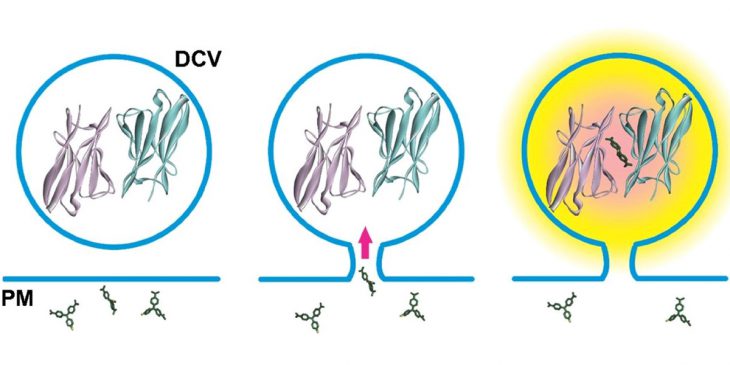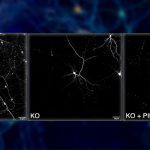The brain is an electrochemical device. To process information or change behavior, neurons become electrically active and release chemicals, which travel to other neurons that respond in turn by changing their electrical activity.
Except sometimes these chemicals squirt out randomly. For almost 70 years, scientists thought that classical neurotransmitters – the molecular messengers brain cells use to communicate – were the only neurochemicals to do this, but now University of Pittsburgh researchers have witnessed spontaneous release for neuropeptide molecules as well.
That’s important because neuropeptides tend to be widespread in the brain, and their action can affect behavior in complex ways. Neurotransmitters, by contrast, dial up or down the electrical activity of single neurons at a time. So, random neurotransmitter release is essentially noise, but random neuropeptide release could have larger consequences for complex behaviors like sleep, feeding and addiction.
This finding, published in the Proceedings of the National Academy of Sciences in August, was made possible by a new visualization method developed by collaborators at nearby Carnegie Mellon University.
 “In the past, we didn’t have tools sensitive enough to pick this up,” said senior author Dr. Edwin Levitan, professor and vice chair of pharmacology and chemical biology at Pitt. “With those coarse tools you needed a lot of activity to see release. No one suspected spontaneous release was going on because there was no way to detect it.”
“In the past, we didn’t have tools sensitive enough to pick this up,” said senior author Dr. Edwin Levitan, professor and vice chair of pharmacology and chemical biology at Pitt. “With those coarse tools you needed a lot of activity to see release. No one suspected spontaneous release was going on because there was no way to detect it.”
Levitan’s team took advantage of the “kiss and run” mechanism that brain cells use to eject neuropeptides.
A capsule ferrying neuropeptides around the cell nuzzles up against the cell membrane and opens a tiny conduit to the outside world. Then, the capsule spits out its neuropeptide payload, seals up and runs away.
Though kiss and run itself is not new, the advance here comes from being able to clearly visualize it with enough precision to see the small amounts of neuropeptides escaping from neurons between bouts of electrical activity.
Using a genetic tag, the researchers inserted a reporter molecule into the neuropeptide capsules inside the nerve cell of a fruit fly. Then, during the “kiss” phase of neuropeptide release, the reporter molecule combined with dye outside the cell, which turns fluorescent only when the two are together.
Watching this all unfold under the microscope, Levitan’s team witnessed spontaneous neuropeptide release for the first time ever.
“It was very surprising,” Levitan said. “The dogma is that you need a lot of activity to get neuropeptide release. We showed that you don’t need any activity.”
Clinically, many drugs are designed to manipulate neuropeptide signaling, treating conditions ranging from chronic migraines to chemotherapy-induced nausea. Knowing that neuropeptides are floating around at rest could change the approach to neuropeptide-based treatments.
“The old picture in people’s heads is that a neuron at rest is like a radio that’s turned off, and it takes a lot of effort to turn it on – you need a lot of activity to get this release – but what we showed is that the knob isn’t turned off all the way,” Levitan said. “It’s on a little bit all the time. That means drugs can tweak it, they can lower the volume.”








